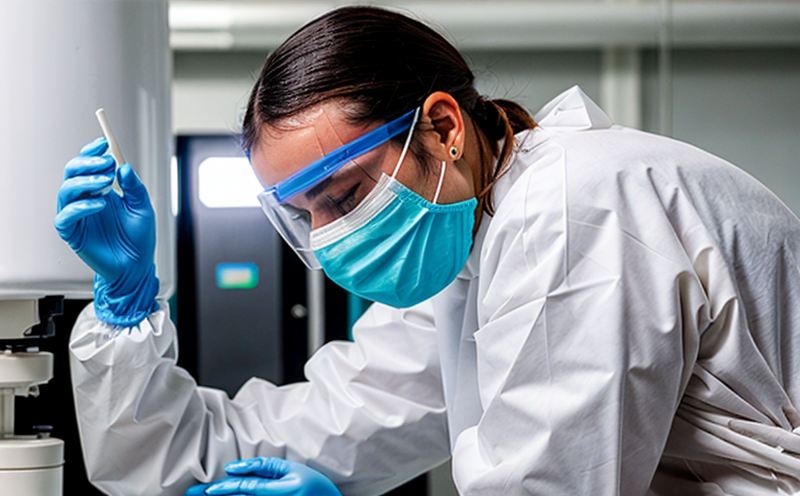IEC TR 62778 Blue Light Hazard Photobiological Safety Testing of LED Products
The International Electrotechnical Commission (IEC) Technical Report TR 62778, titled "Photobiological safety of lamps and lamp systems," has become a cornerstone for ensuring the photobiological safety of light-emitting diode (LED) products. This technical report addresses the risk of blue light hazard (BLH), which can cause retinal damage, especially when exposed to high-intensity blue light sources like LEDs.
As technology continues to advance, LED lighting has become increasingly popular due to its energy efficiency and longevity. However, this advancement also introduces new challenges in terms of safety. IEC TR 62778 provides a framework for assessing the photobiological risk associated with these products. The standard covers various aspects including emission limits, measurement methods, and exposure scenarios. Compliance with IEC TR 62778 is crucial not only to ensure product safety but also to meet regulatory requirements in many countries.
The testing process involves several critical steps. Initially, the LED product must be characterized by identifying its spectral power distribution (SPD). This information is essential for understanding the light emitted and assessing potential hazards. Once the SPD is known, the next step is to determine the blue-light content of the product. This requires precise calibration using specialized equipment such as integrating spheres and spectroradiometers.
After characterizing the product, it undergoes exposure testing in accordance with IEC TR 62778 guidelines. During this phase, the device is placed under controlled conditions to simulate real-world usage scenarios. The goal is to assess how much blue light a person might be exposed to if they were using the LED lighting product over an extended period. The test results are then compared against internationally recognized safety limits provided by the standard.
The photobiological safety classification of the product depends on its BLH risk level, which ranges from Class I (lowest risk) to Class IV (highest risk). Products falling into Classes II and III require more stringent measures for protection. For instance, Class II products may necessitate additional safeguards such as shielding or warning labels.
Compliance with IEC TR 62778 is not just about meeting legal requirements; it also enhances brand reputation by demonstrating a commitment to consumer safety. Many consumers today are increasingly concerned about the health impacts of LED lighting, and companies that can demonstrate compliance with recognized standards like this one will likely gain market advantage.
Furthermore, IEC TR 62778 aligns closely with other international standards such as ISO/IEC 17025 for laboratory accreditation. This alignment ensures that the testing process is conducted in a consistent and reliable manner across different jurisdictions. As the lighting industry continues to grow globally, adherence to these standards becomes increasingly important.
In conclusion, IEC TR 62778 provides a comprehensive approach to evaluating the photobiological safety of LED products. By following this standard, manufacturers can ensure that their products do not pose an undue risk from blue light exposure while also meeting regulatory requirements and enhancing consumer confidence.
Benefits
Compliance with IEC TR 62778 offers numerous benefits beyond simply meeting regulatory requirements. For quality managers and compliance officers, it provides a clear framework for ensuring that products are safe for consumers. This can help avoid costly recalls and legal issues down the line.
R&D engineers gain valuable insights into the potential risks associated with their innovations. By adhering to this standard, they can design safer products from the outset, potentially reducing development time and costs. Furthermore, compliance demonstrates a commitment to innovation and safety that can enhance brand reputation among consumers who prioritize health and well-being.
For procurement departments, ensuring suppliers meet IEC TR 62778 standards helps maintain consistent quality across supply chains. This reduces the risk of substandard components being used in end products, thereby maintaining high standards throughout the entire manufacturing process.
Competitive Advantage and Market Impact
Adhering to IEC TR 62778 can give companies a significant competitive edge. In an increasingly health-conscious market, consumers are becoming more aware of the risks associated with blue light exposure from LED lighting. Companies that can demonstrate compliance with recognized standards like this one will likely attract more customers and gain greater market share.
Moreover, many countries have begun to implement regulations requiring manufacturers to comply with photobiological safety testing. By staying ahead of these trends, companies not only avoid costly non-compliance penalties but also position themselves as leaders in the industry. This proactive approach can help companies weather future regulatory changes more easily and even open up new markets where stringent safety standards are required.
Use Cases and Application Examples
| Use Case | Description |
|---|---|
| Data Centers | LED lights in data centers must be tested for photobiological safety, especially considering the long periods of continuous operation and proximity to sensitive equipment. |
| Hospitals | Lighting systems in healthcare facilities are tested to ensure they do not pose a risk to patients or staff, particularly those who may have light-sensitive conditions. |
| Schools and Universities | Led lighting in educational institutions is evaluated for photobiological safety to protect the health of students and staff, especially children whose eyes are more susceptible to blue light damage. |
| Offices | LED lights used in office environments must comply with IEC TR 62778 to ensure they do not cause discomfort or potential harm to employees working under them for extended periods. |
| Application Example | Description |
|---|---|
| A Manufacturer of Outdoor LED Signs | This manufacturer must ensure that their signs do not emit excessive blue light, which could cause discomfort or visual strain for pedestrians and drivers. Testing ensures compliance with IEC TR 62778 standards. |
| A Company Specializing in Smart Home Devices | Smart home lighting systems are rigorously tested to ensure they meet photobiological safety requirements, providing peace of mind to consumers. |
| An Architectural Firm Designing High-End Office Spaces | The firm ensures that the LED lights used in their designs comply with IEC TR 62778 to provide safe and comfortable working environments for occupants. |





